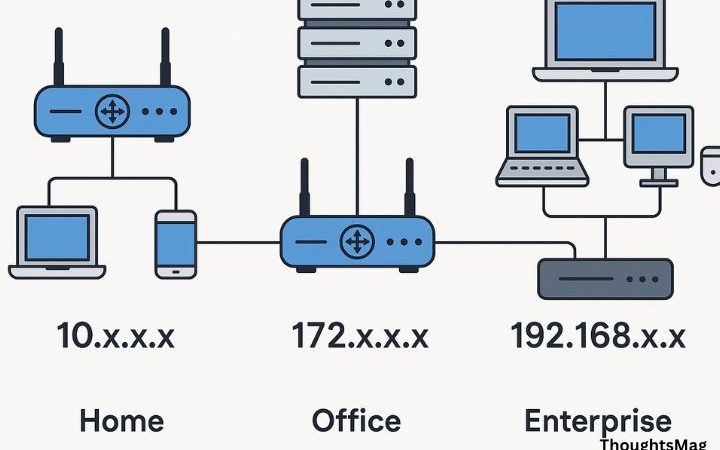SSIS 816: A Deep Dive into Latest Integration

Introduction
In today’s fast-paced digital landscape, where data volumes are growing exponentially, the need for powerful and efficient ETL (Extract, Transform, Load) tools has never been more critical. SQL Server Integration Services (SSIS) 816 emerges as a groundbreaking evolution in Microsoft’s data integration suite—engineered to meet the dynamic demands of modern enterprise data workflows. This cutting-edge release not only redefines performance and scalability but also introduces advanced functionalities that streamline data movement, transformation, and orchestration like never before. In this comprehensive guide, we’ll explore the key features, performance enhancements, architectural upgrades, and strategic benefits of SSIS 816. From handling massive datasets to simplifying complex data pipelines, It is poised to become an indispensable tool for forward-thinking businesses looking to future-proof their data operations.
What is SSIS-816?
SSIS-816 refers to a key enhancement within the SQL Server Integration Services (SSIS) framework, designed to improve the efficiency, performance, and scalability of data integration workflows. While specific features may vary by version, SSIS-816 typically represents a significant upgrade focused on streamlining ETL processes and supporting modern data demands.
Key Features of SSIS-816
- Enhanced Performance: This may introduces performance optimizations that reduce data processing time, enabling faster ETL (Extract, Transform, Load) operations.
- Improved Connectivity: With updated connectors, it ensures seamless integration with a broader range of data sources, including cloud-based platforms and diverse databases.
- Advanced Error Handling: The update offers more robust error detection and management capabilities, allowing for smoother troubleshooting and increased data reliability.
- User–Friendly Interface: SSIS-816 includes interface enhancements that make it more intuitive for users to design and manage data workflows, reducing the learning curve for new users.
Benefits of Implementing SSIS-816
- Streamlined Data Integration
The enhancements in it facilitate more efficient data integration processes, enabling organizations to consolidate data from various sources with minimal friction.
- Scalability
With improved performance and connectivity, It supports the scaling of data operations, accommodating growing data volumes and complex workflows.
- Cost Efficiency
By optimizing data processing and reducing errors, It contributes to cost savings in data management and operational expenses.
- Enhanced Decision-Making
Reliable and timely data integration ensures that decision-makers have access to accurate information, leading to more informed business strategies.
Key Improvements and Enhancements in SSIS 816
Advanced Monitoring and Logging for Cluster-Wide Visibility
SSIS 816 introduces significantly enhanced monitoring and logging capabilities that provide administrators with comprehensive, real-time insights into the performance and health of SSIS applications across the entire cluster. These improvements enable faster identification of bottlenecks, errors, and performance issues, ensuring quicker resolution and minimizing downtime. As a result, the SSIS environment becomes more robust, reliable, and easier to manage at scale.
Intelligent Dynamic Scaling for Optimal Resource Utilization
One of the standout features of SSIS 816 is its ability to automatically scale based on workload demands. This dynamic scaling functionality intelligently adjusts the number of processing nodes in real time—scaling up during peak workloads for better performance and scaling down during idle times to conserve resources. By optimizing resource allocation automatically, SSIS 816 ensures higher efficiency, cost-effectiveness, and improved responsiveness without requiring manual intervention.
Implementing SSIS-816 in Your Organization
To leverage the benefits of This, organizations should consider the following steps:
Assess Current Data Workflows
Evaluate existing data integration processes to identify areas that could benefit from the enhancements offered by this service.
Plan the Upgrade
Develop a comprehensive plan for integrating SSIS-816, including timelines, resource allocation, and potential impact on current operations.
Training and Development
Invest in training for team members to ensure they are proficient in utilizing the new features and capabilities of this.
Monitor and Optimize
After implementation, continuously monitor data workflows to identify opportunities for further optimization and to address any emerging challenges.
Upgrading to SSIS 816: A Step-by-Step Guide for a Smooth Transition
Upgrading to SQL Server Integration Services (SSIS) 816 unlocks powerful new features and performance enhancements. However, to make the most of this upgrade, it’s essential to follow a structured and well-prepared approach. Here’s what you need to know to ensure a seamless transition.
1. Compatibility Check: Ensure Your Environment Is Ready
Before initiating the upgrade, verify that your current SQL Server environment meets the requirements. SSIS 816 only supports SQL Server 2016 or later. If you’re running an older version, you’ll need to update your SQL Server instance first. Ensuring compatibility from the start helps avoid unnecessary delays or functionality issues post-upgrade.
2. Backup & Restore: Secure Your Existing Data
Never upgrade without a safety net. Performing a full backup of your SSISDB, SSIS packages, and related configurations is a critical step. In the rare case something goes wrong during the upgrade, having a recent backup ensures that you can restore your system without losing data or productivity.
3. Install SSIS Scale Out Components
SSIS 816 operates in a distributed environment, and for that, Scale Out components must be installed on each server in your cluster. Fortunately, the upgrade includes a built-in installation wizard that walks you through the process step by step—making setup easier and reducing the chances of configuration errors.
4. Configure the Cluster: Define Roles and Communication
Once all components are in place, it’s time to configure the SSIS Scale Out cluster. This involves:
-
Defining your cluster topology
-
Assigning roles to each server (master or worker)
-
Setting up secure communication channels
SSIS 816 enhances this experience with user-friendly interfaces and guided prompts, allowing administrators to configure complex environments with greater confidence and less hassle.
Conclusion
SSIS-816 marks a major leap forward in data integration, delivering superior performance, improved connectivity, and a more intuitive user experience. By upgrading, organizations can simplify complex data workflows, scale operations seamlessly, and unlock faster, data-driven decision-making. In a world where data is power, embracing innovations like SSIS-816 is not just a smart move—it’s essential for staying ahead of the curve in today’s competitive digital landscape.
Frequently Asked Questions (FAQs)
Q1: What is the primary purpose of SSIS-816?
It is designed to enhance SQL Server Integration Services by improving performance, connectivity, and error handling in data integration processes.
Q2: How does It improve data integration performance?
This introduces optimizations that reduce data processing times, enabling faster and more efficient ETL operations.
Q3: Is training necessary for implementing SSIS-816?
While not mandatory, training is recommended to fully leverage the new features and capabilities introduced in it, ensuring effective implementation.
Q4: Can SSIS-816 integrate with cloud-based data sources?
Yes, it includes updated connectors that facilitate seamless integration with various cloud-based platforms and services.






